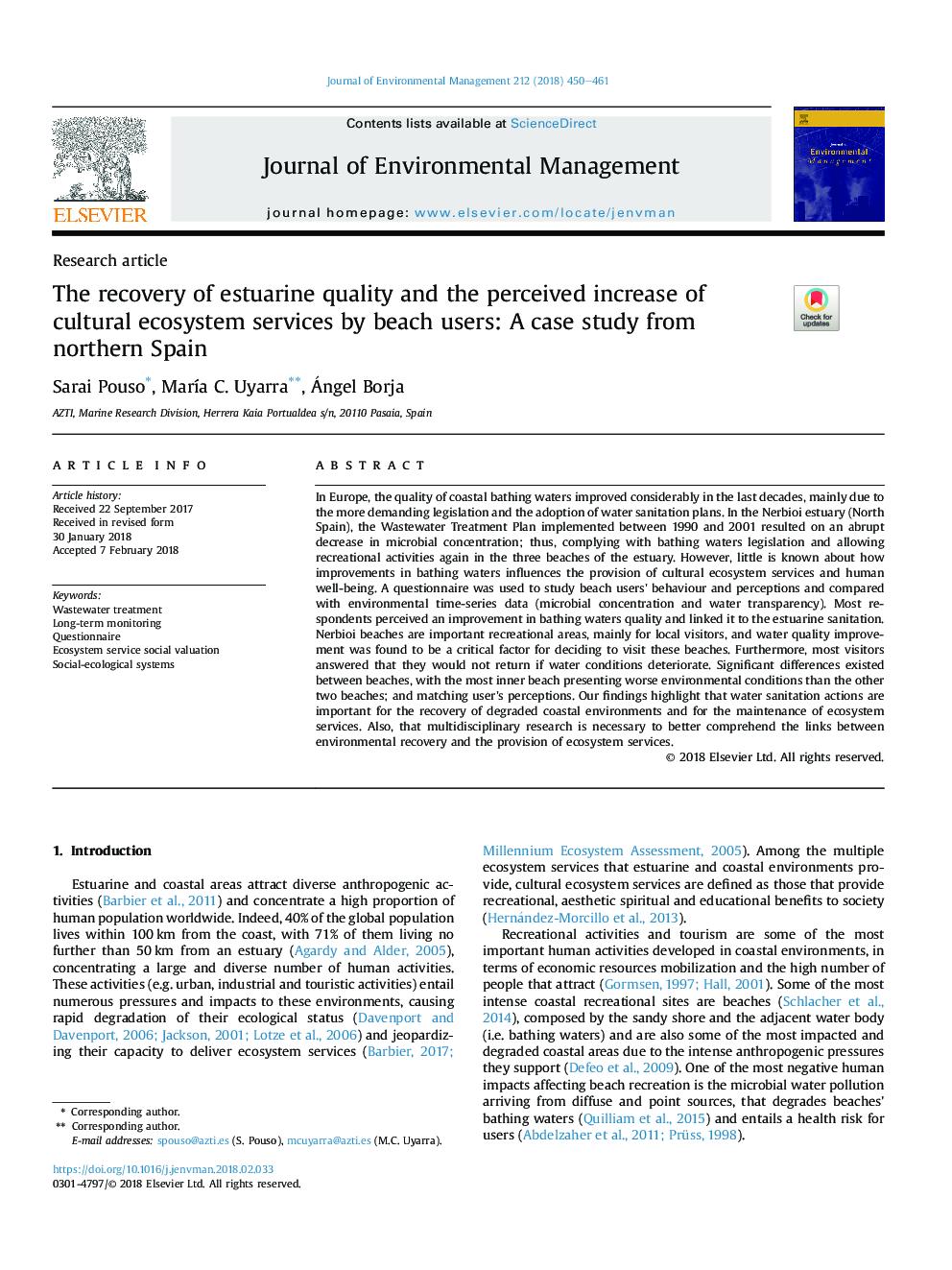| Article ID | Journal | Published Year | Pages | File Type |
|---|---|---|---|---|
| 7478351 | Journal of Environmental Management | 2018 | 12 Pages |
Abstract
In Europe, the quality of coastal bathing waters improved considerably in the last decades, mainly due to the more demanding legislation and the adoption of water sanitation plans. In the Nerbioi estuary (North Spain), the Wastewater Treatment Plan implemented between 1990 and 2001 resulted on an abrupt decrease in microbial concentration; thus, complying with bathing waters legislation and allowing recreational activities again in the three beaches of the estuary. However, little is known about how improvements in bathing waters influences the provision of cultural ecosystem services and human well-being. A questionnaire was used to study beach users' behaviour and perceptions and compared with environmental time-series data (microbial concentration and water transparency). Most respondents perceived an improvement in bathing waters quality and linked it to the estuarine sanitation. Nerbioi beaches are important recreational areas, mainly for local visitors, and water quality improvement was found to be a critical factor for deciding to visit these beaches. Furthermore, most visitors answered that they would not return if water conditions deteriorate. Significant differences existed between beaches, with the most inner beach presenting worse environmental conditions than the other two beaches; and matching user's perceptions. Our findings highlight that water sanitation actions are important for the recovery of degraded coastal environments and for the maintenance of ecosystem services. Also, that multidisciplinary research is necessary to better comprehend the links between environmental recovery and the provision of ecosystem services.
Related Topics
Physical Sciences and Engineering
Energy
Renewable Energy, Sustainability and the Environment
Authors
Sarai Pouso, MarÃa C. Uyarra, Ángel Borja,
